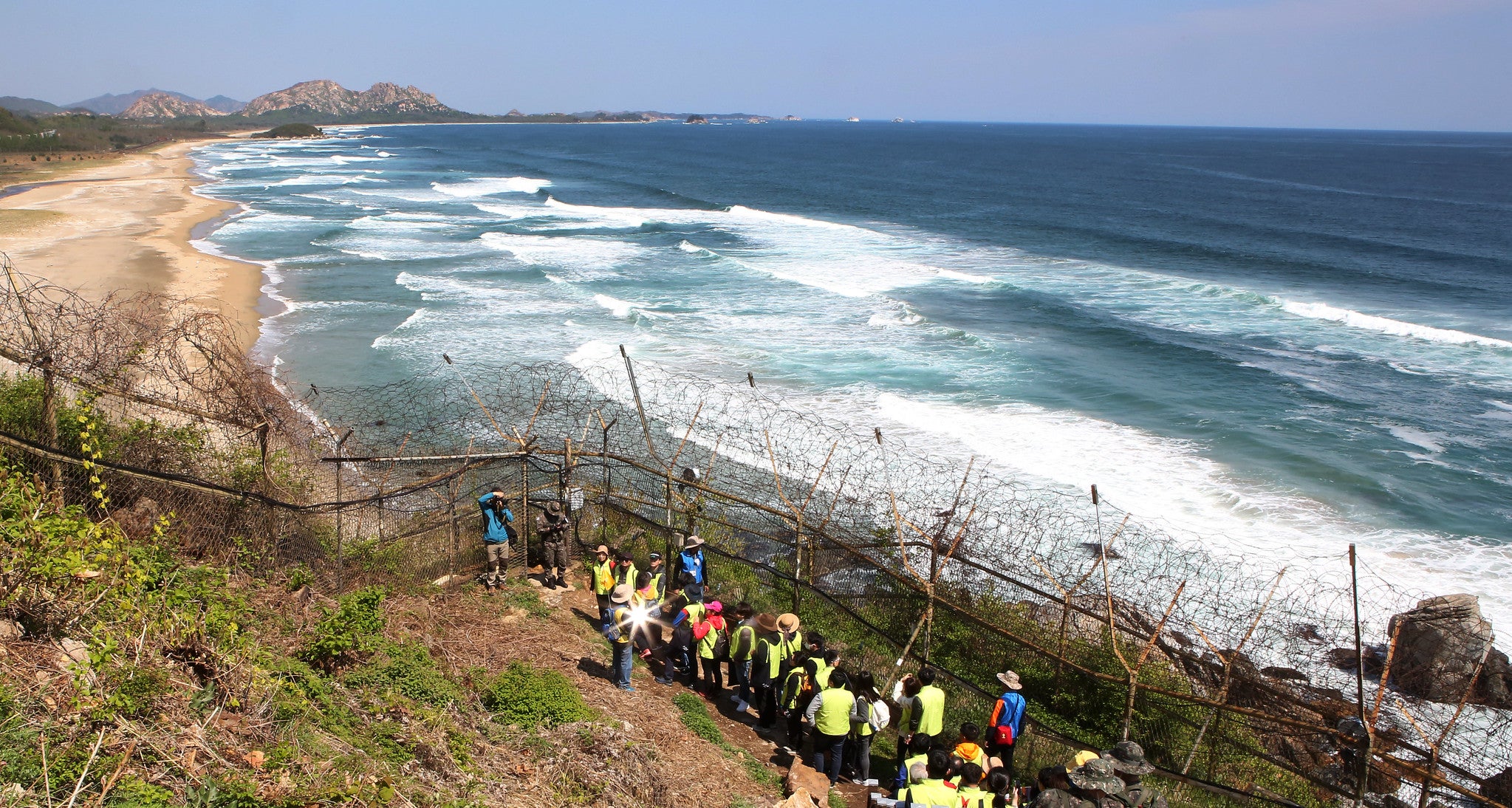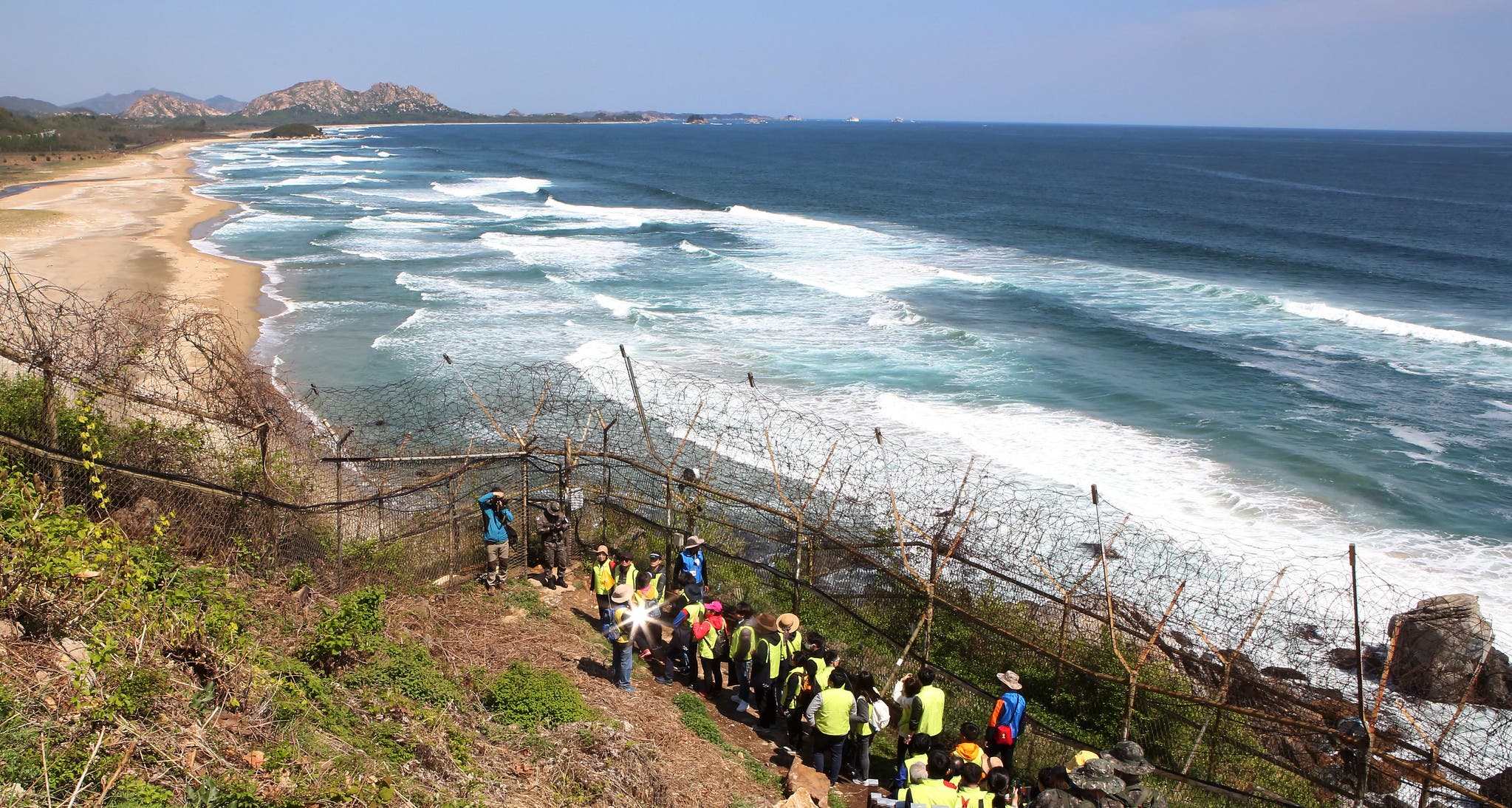A New Hiking Trail is Open in Korea’s DMZ

'Kim Youngdeok / Courtesy of the Republic of Korea Ministry of Culture, Sports, and Tourism'

On April 28, a group of 20 South Korean hikers made history by walking a newly-designated “Peace Trail” along the world’s most heavily militarized border. Selected by lottery, they were the first civilians to trek through the nation’s demilitarized zone (DMZ) since its establishment by the Korean War Armistice Agreement in 1953.
Accompanied by South Korean soldiers and a tour guide, the group trekked down the trail (more road than singletrack; for security reasons they were accompanied by military vehicles) while taking in views of the Sea of Japan. Beyond fences topped with razor wire and placards warning of land mines, they could glimpse North Korea’s 5,374-foot Mount Kumgang, whose jagged granite peaks and coursing waterfalls have made it a revered destination for hundreds of years.
“I can hardly control my emotion for becoming the first to step on the land closed to civilians since the national division,” 60-year-old Busan resident, Park Sang Ki, told Yonhap News Agency afterward. “I wish the barbed wires will disappear as soon as possible so that the people of the South and North can come and go freely.”
The walk celebrated the one-year anniversary of the Panmunjom Declaration, a 2018 agreement outlining steps to formally end the Korean War. Announced by President Moon Jae-in during an Independence Day address on March 1, the Peace Trail is part of a larger effort to renew economic cooperation between North and South. Though the first phase of implementation will include just three routes (each about 2 miles long), the trail will eventually span the DMZ and connect 13 existing educational sites. According to a United Nations Command press release, the Peace Trail will further the sites’ mission of promoting “inter-Korean exchanges and learning opportunities.”
“[UNC] and the [Republic of Korea] government have demonstrated superb teamwork, collaboration, and coordination throughout the entire ‘peace trail’ process and will continue to do so,” said General Robert Abrams, commander of UNC and U.S. Forces Korea. “The ROK military has worked extremely long hours to ensure the success of this very important initiative, while assuring visitors their safety remains paramount.”
A North—South partnership based upon outdoor recreation is not unprecedented. Between 1998 and 2008, the two countries jointly operated a tour program on Mount Kumgang. Gangwon Province, where the peace trail lies, was the lone gateway for South Koreans who wanted to visit the North. That relationship crumbled when a North Korean guardsman shot and killed a tourist.
President Moon sees the Peace Trail as a precursor for similar programs.
“Through the Mount Kumgang tour program, Gangwon Province already experienced that peace constitutes economy,” Moon said in a statement on the eve of the walk. “Amid an audacious journey to the denuclearization of the Korean Peninsula and the establishment of a peace regime, the government will prepare for the peace economy era of the peninsula, together with Gangwon Province.”
Hikers can expect to see rare wildlife
Maintained as a no man’s land for 60 years, the DMZ has become a refuge for wildlife—including many endangered species.
“If you were to do an experiment on how new species could be restored when the Earth has gone to ruins, [this] would be the best place,” said Kim Seung-ho, head of the DMZ Ecology Research Institute, in an interview with CNN. Kim has been studying plants and animals in the restricted area for 20 years. He says the DMZ is home to an incredible array of biodiversity.
According to the National Institute of Ecology of South Korea, the DMZ features more than 6,000 different species of flora and fauna. Its warm wetlands are an important wintering ground for birds migrating from northeastern China, Russia, and Siberia along the Central Asian Flyway. Kim described flocks of as many as 100-500 endangered or vulnerable red-crowned and white-naped cranes, which can be found in Cheorwon. Fields offer glimpses of musk and water deer, mountain goats, leopard cats, endangered Amur leopards, and more.
Kim founded the Institute in 2004 as a means of advising the government about how to best protect and utilize the DMZ’s abundant wildlife. With conflict always on the horizon, securing cooperation between the North and South has always been the biggest challenge.
“One of the most agonizing questions for me is how North and South Korea can come together and utilize the DMZ as a tool of reconciliation,” Kim told CNN. He hopes the new Peace Trail will offer such an opportunity.